Input interpretation

acetylcysteine
Chemical names and formulas
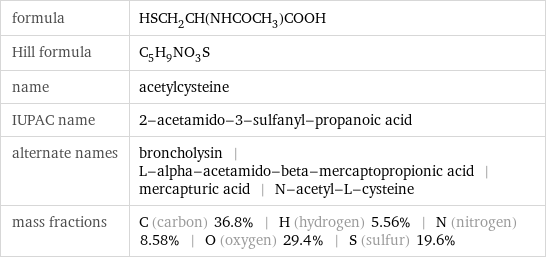
formula | HSCH_2CH(NHCOCH_3)COOH Hill formula | C_5H_9NO_3S name | acetylcysteine IUPAC name | 2-acetamido-3-sulfanyl-propanoic acid alternate names | broncholysin | L-alpha-acetamido-beta-mercaptopropionic acid | mercapturic acid | N-acetyl-L-cysteine mass fractions | C (carbon) 36.8% | H (hydrogen) 5.56% | N (nitrogen) 8.58% | O (oxygen) 29.4% | S (sulfur) 19.6%
Lewis structure
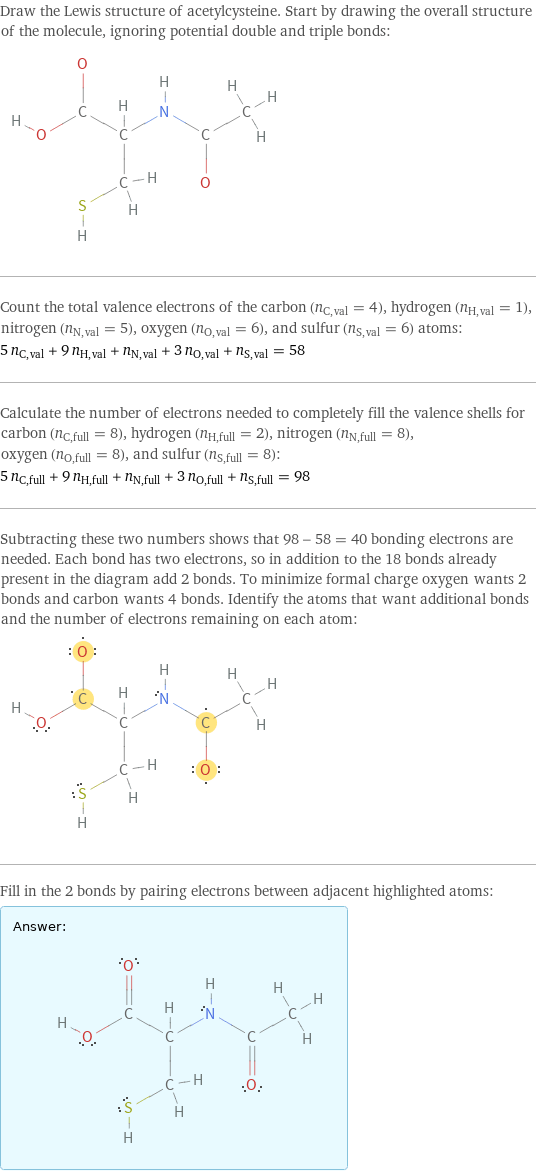
Draw the Lewis structure of acetylcysteine. Start by drawing the overall structure of the molecule, ignoring potential double and triple bonds: Count the total valence electrons of the carbon (n_C, val = 4), hydrogen (n_H, val = 1), nitrogen (n_N, val = 5), oxygen (n_O, val = 6), and sulfur (n_S, val = 6) atoms: 5 n_C, val + 9 n_H, val + n_N, val + 3 n_O, val + n_S, val = 58 Calculate the number of electrons needed to completely fill the valence shells for carbon (n_C, full = 8), hydrogen (n_H, full = 2), nitrogen (n_N, full = 8), oxygen (n_O, full = 8), and sulfur (n_S, full = 8): 5 n_C, full + 9 n_H, full + n_N, full + 3 n_O, full + n_S, full = 98 Subtracting these two numbers shows that 98 - 58 = 40 bonding electrons are needed. Each bond has two electrons, so in addition to the 18 bonds already present in the diagram add 2 bonds. To minimize formal charge oxygen wants 2 bonds and carbon wants 4 bonds. Identify the atoms that want additional bonds and the number of electrons remaining on each atom: Fill in the 2 bonds by pairing electrons between adjacent highlighted atoms: Answer: | |
3D structure
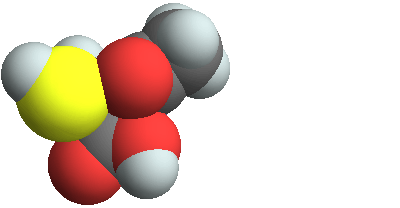
3D structure
Basic properties
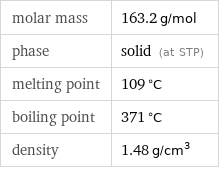
molar mass | 163.2 g/mol phase | solid (at STP) melting point | 109 °C boiling point | 371 °C density | 1.48 g/cm^3
Units

Hydrophobicity and permeability properties

predicted LogP hydrophobicity | -0.03 predicted LogS | -1.51
Basic drug properties

approval status | approved | small molecule drug categories | antiviral agent | expectorant | free radical scavenger dosage forms | respiratory (inhalation): liquid | respiratory (inhalation): solution

brand names | ACC | acetadote | fluimucil | lysox | mucolysin | mucomyst | parvolex
Solid properties (at STP)

density | 1.48 g/cm^3
Units

Chemical identifiers
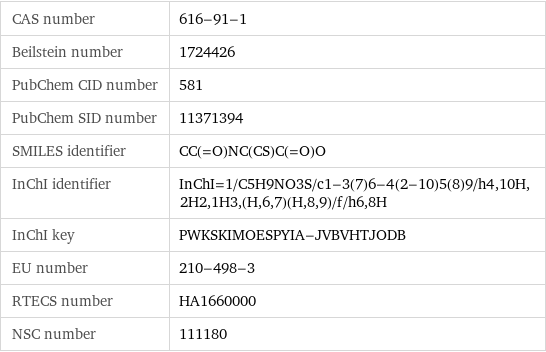
CAS number | 616-91-1 Beilstein number | 1724426 PubChem CID number | 581 PubChem SID number | 11371394 SMILES identifier | CC(=O)NC(CS)C(=O)O InChI identifier | InChI=1/C5H9NO3S/c1-3(7)6-4(2-10)5(8)9/h4, 10H, 2H2, 1H3, (H, 6, 7)(H, 8, 9)/f/h6, 8H InChI key | PWKSKIMOESPYIA-JVBVHTJODB EU number | 210-498-3 RTECS number | HA1660000 NSC number | 111180
NFPA label

NFPA label
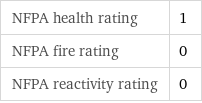
NFPA health rating | 1 NFPA fire rating | 0 NFPA reactivity rating | 0
Toxicity properties

RTECS classes | human data